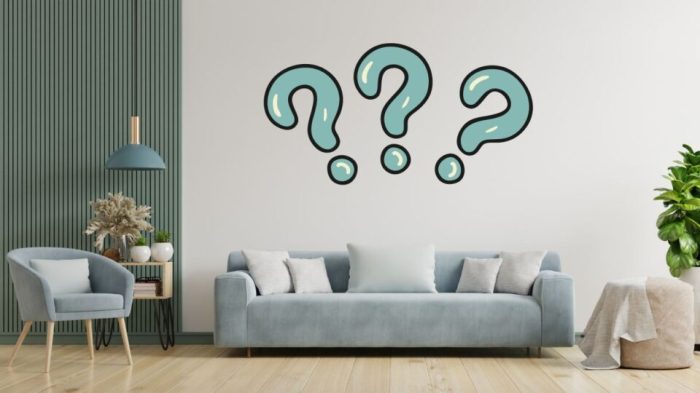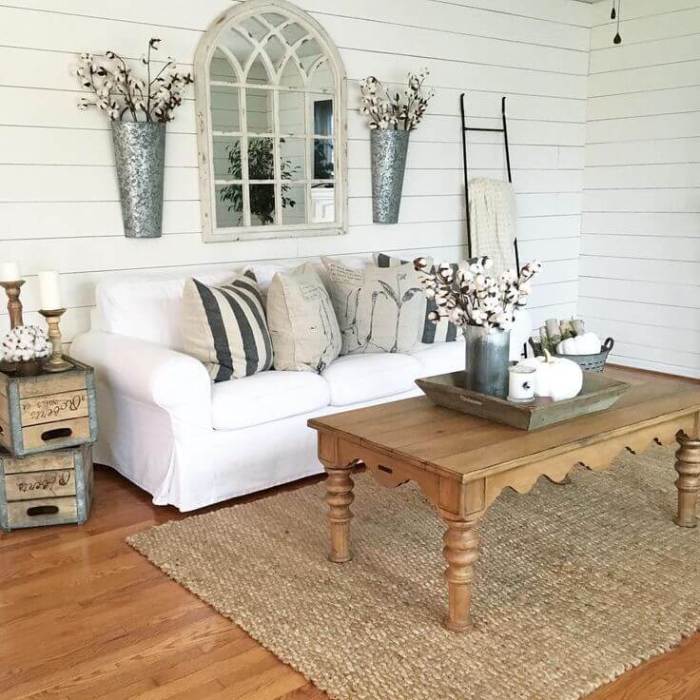Space Optimization and Design Considerations for Behind-Couch Wall Decor

Behind couch wall decor – Transforming the often-underutilized space behind your sofa into a stylish focal point requires careful consideration of both aesthetics and practicality. The key is to balance visual impact with the functionality of the living room, ensuring the decor complements your existing furniture and doesn’t hinder everyday life. This involves thoughtful planning around lighting, traffic flow, and the inherent challenges of decorating a space partially obscured by a large piece of furniture.
Designing Layouts for Behind-Couch Wall Decor, Behind couch wall decor
The ideal design for your behind-couch wall depends heavily on the size of your sofa and the dimensions of your room. A large, sectional sofa will require a different approach than a smaller loveseat. Consider the overall style of your room and the existing color palette when selecting your decor. Below are three distinct design options, adaptable to various spaces:
| Design Option | Description | Suitable for | Image Description |
|---|---|---|---|
| Gallery Wall | A curated collection of framed prints, photographs, and artwork arranged in a visually pleasing pattern. Varying sizes and frames create visual interest. | Smaller couches in rooms with high ceilings; allows for a more dramatic statement. | Imagine a wall adorned with a mix of black and white photography, vibrant abstract prints, and subtly textured landscape images, all framed in varying shades of wood and metal, creating a dynamic and balanced composition. The frames are carefully arranged, with larger pieces anchoring the display and smaller pieces filling the spaces. |
| Large-Scale Artwork | A single, oversized piece of art – a painting, tapestry, or even a sculptural element – that commands attention. | Larger couches in rooms with ample wall space; creates a bold statement. | Picture a striking, oversized abstract canvas in bold, jewel tones hung centrally above a large, neutral-toned sofa. The artwork’s vibrant colors and dynamic composition become a captivating focal point, drawing the eye and balancing the sofa’s substantial presence. |
| Mirror and Shelf Combination | A large mirror reflects light, creating the illusion of more space, while a floating shelf provides a display area for decorative objects. | Rooms with limited natural light or smaller spaces; maximizes the feeling of openness. | Visualize a substantial rectangular mirror placed centrally, reflecting light and visually expanding the room. Below it, a sleek, floating shelf holds a collection of carefully chosen decorative objects – a sculptural vase, a few well-placed books, and a small potted plant – adding visual interest without overwhelming the space. |
Challenges of Decorating Behind a Couch
Decorating the wall behind a couch presents unique challenges. Lighting must be carefully considered to avoid harsh shadows or glare on the artwork. Traffic flow is another crucial factor; the decor shouldn’t impede movement around the sofa. Finally, the style of the couch itself influences the decor choices. A modern, minimalist sofa might pair best with a clean, geometric wall design, while a traditional, ornate couch might complement a more classical or eclectic arrangement.
Balancing a Large Couch with Wall Decor
Visually balancing a large couch requires a strategic approach to color and texture. A large, dark couch can be balanced by lighter-colored wall decor, creating a sense of visual equilibrium. Conversely, a lighter-colored couch might benefit from a bolder, more textured wall treatment. Using complementary colors and patterns can create visual harmony. For instance, a muted grey sofa could be complemented by artwork featuring warm earthy tones or textured fabrics, introducing visual interest without overwhelming the space.
The use of a large mirror can also help to visually balance the proportions, reflecting light and making the space appear larger and less dominated by the couch.
So, you’re thinking about sprucing up that space behind the couch, eh? Don’t just stick another dusty old family photo there, mate! Consider something a bit more ecieh, like a metal tree wall decor – it’ll add some serious wawasan to your living room, you know. Then, after that metal tree masterpiece is hung, you can finally decide what else to put behind the couch – maybe a tiny shrine to your favorite mie ayam?
Incorporating Different Textures and Materials

The key to a truly captivating behind-couch wall decor lies not just in the visual elements but also in the interplay of textures. A carefully curated mix of materials can transform a simple wall into a statement piece, adding depth, visual interest, and a touch of personality to your living space. By strategically incorporating different textures, you can elevate the overall aesthetic and create a more dynamic and engaging environment.The strategic use of diverse textures behind a couch dramatically impacts the room’s visual appeal.
Rough textures create a sense of rustic charm, while smooth surfaces lend a modern, sophisticated touch. Combining various textures introduces layers and dimensionality, preventing the wall from feeling flat and monotonous. This depth enhances the overall design, drawing the eye and creating a more engaging focal point.
Textured Wall Decor Schemes
Below are three distinct wall decor schemes showcasing the power of texture combinations. Each scheme offers a different style, demonstrating the versatility of this design approach.
- Scheme 1: Rustic Elegance
- Materials: Reclaimed wood planks (vertical orientation), a large woven tapestry (centered), and wrought iron candle sconces (flanking the tapestry).
- Placement: The wood planks create a rustic backdrop, the tapestry adds a soft, textural contrast, and the iron sconces introduce a touch of metallic sophistication.
- Scheme 2: Modern Minimalism
- Materials: Smooth, light-grey concrete panels (covering the majority of the wall), a large, abstract metal sculpture (off-center), and a plush velvet cushion (placed against the wall, near the sculpture).
- Placement: The concrete panels provide a clean, minimalist foundation. The metal sculpture adds a sculptural element, and the velvet cushion offers a soft, luxurious contrast against the hard surfaces.
- Scheme 3: Bohemian Chic
- Materials: A collection of intricately patterned tapestries (hung in an overlapping arrangement), a macrame wall hanging (centered), and several small, decorative ceramic plates (arranged asymmetrically).
- Placement: The tapestries create a vibrant, layered effect. The macrame adds a touch of handcrafted charm, and the ceramic plates introduce small pops of color and texture.
Harmonious Texture Combinations
Successfully integrating various textures requires careful consideration of color palettes, scale, and overall design balance. For instance, pairing a rough, textured stone with sleek, polished metal creates a visually striking contrast. Similarly, combining soft fabrics like wool or velvet with harder surfaces like wood or glass adds warmth and depth. To avoid visual clutter, it’s essential to maintain a sense of balance.
A dominant texture should be chosen as a base, with other textures introduced as accents to complement and enhance the overall design. Consider using a consistent color scheme to unify disparate textures, preventing the wall from appearing chaotic. For example, a neutral color palette can work beautifully with a range of textures, from the warm tones of wood to the cool tones of metal.
The key is to create a cohesive and visually pleasing arrangement that avoids overwhelming the space.
Essential Questionnaire: Behind Couch Wall Decor
What size artwork should I choose for the space behind my couch?
The artwork’s size should be proportionate to the couch and the wall. A general rule is to choose artwork that is about two-thirds to three-quarters the width of your couch.
How can I prevent the wall behind my couch from looking cluttered?
Maintain a cohesive color palette and style. Avoid overcrowding the wall with too many elements. Use negative space effectively to create visual balance.
What if my couch is against a window?
Consider sheer curtains or lighter decor elements to avoid blocking natural light. Opt for wall decor that complements the view rather than competes with it.
Can I use mirrors behind my couch?
Yes, mirrors can create a sense of depth and reflect light, making the room feel larger. However, avoid placing them directly opposite windows to prevent glare.
